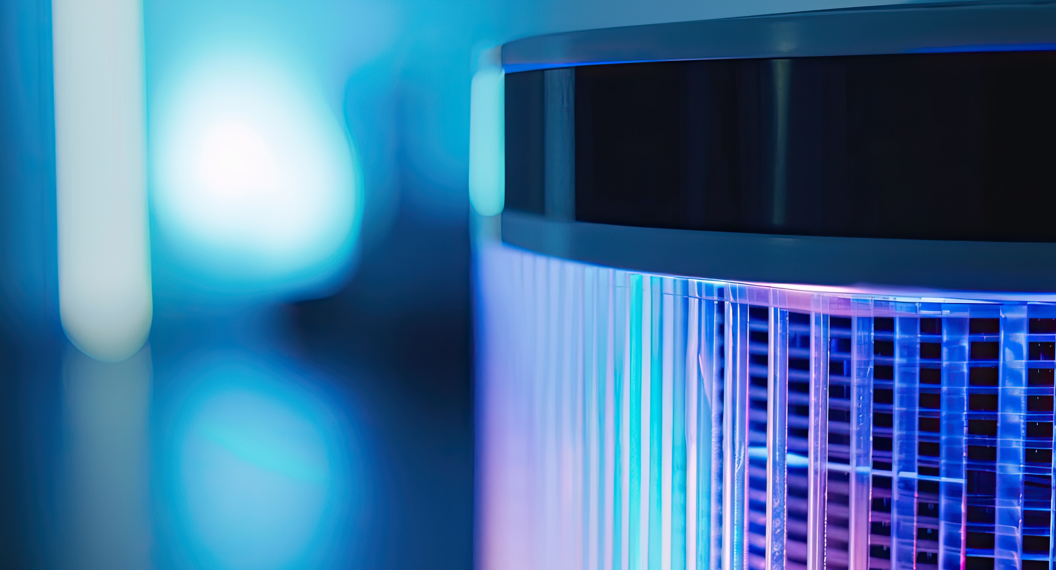Outdoor Air Purification Tower
KEY INFORMATION
Electronics - Sensors & Instrumentation
TECHNOLOGY OVERVIEW
Controlling air pollution, particularly from PM 2.5 particulate matter, is crucial for protecting human health and the environment. These microscopic particles can penetrate deep into the respiratory system, causing serious health issues such as respiratory illnesses, cardiovascular problems, and even premature death. PM 2.5 is a leading cause of poor air quality, especially in densely populated regions of Asia, where industrial emissions, vehicle exhaust, and biomass burning are prevalent. Reducing this pollution is vital to minimizing its harmful health effects and improving air quality.
To address this pressing issue, this technology has been developed that focuses on air purification through an automatic hybrid air purification tower based on a wet scrubber system. This system can capture particles as small as 0.3 microns, significantly reducing PM2.5 levels in the air. The hybrid power system ensures that it operates with lower electricity consumption compared to traditional scrubbers, making it both energy-efficient and effective. Additionally, this technology uses water instead of packing materials reducing waste generation. By leveraging this technology, urban environments can see a marked improvement in air quality, leading to better health outcomes and a cleaner atmosphere for all.
The technology owner seeks collaborations in environmental sustainability, urban development, and public health to support scaling, co-development, R&D collaboration and licensing.
TECHNOLOGY FEATURES & SPECIFICATIONS
The system draws in polluted air via an exhaust fan, passing it through two layers of high-speed spray nozzles that enhance water surface tension to capture particles as small as 0.3 microns. The purified air is then disinfected using ultraviolet germicidal irradiation (UVGI) technology and released at breathing level, supported by a propeller for airflow control. A hybrid power system reduces electricity usage during daylight, and water is recycled and sterilized through ozone technology and a filtration system, ensuring efficient, sustainable operation.
- Air Capacity: 60,000 m3/h.
- Dust Trap Efficiency: Dual cyclonic nozzle spray and a redesigned PM trap plate to enhance surface tension, improving particle capture efficiency.
- Particle Trap: >2.5 micron.
- Mode of disinfection: Mechanical filtration and ozone.
- Disinfection rate: Targeted to be above 99% (bacteria, virus and fungi).
- Water usage: 50L/day.
POTENTIAL APPLICATIONS
- Urban Areas and Public Spaces: Cities with high pollution levels are primary markets for outdoor air purifier towers. Governments are focusing on air quality improvement initiatives in public spaces, parks, and along highways.
- Private Sector: Commercial real estate developers, especially in projects targeting high-end residential or mixed-use developments, can utilize air purifier towers as part of their environmental and wellness-focused features, such as in luxury estates, hospitals, or educational campuses.
- Hospitality and Tourism: Hotels and resorts in polluted regions may also adopt outdoor air purifiers to improve their guests' well-being, offering cleaner outdoor spaces.
Market Trends & Opportunities
The global air purifier market was valued at USD 15.94 billion in 2023 and is projected to grow at a CAGR of 7.1%, reaching over USD 25.5 billion by 2030. The Asia-Pacific region, accounting for 45% of global revenue, is expected to grow at 7.8%, driven by urbanization and increased awareness of pollution's health risks. Key sectors include residential, commercial, and industrial applications, with growing demand in public spaces, real estate, and hospitality for air quality improvement.
Unique Value Proposition
- Advanced Air Purification Technology: Cutting-edge filtration systems remove particulate matter (PM2.5, PM10).
- Environmental Sustainability: Utilizes water in a Venturi scrubber effectively minimizes waste.
- Energy-Efficient and Smart Design: Integrates an air quality sensor to monitor PM2.5 levels in real-time and automatically adjusts operational speed on air quality data for optimal efficiency.
- Aesthetic Integration: Aesthetically designed to blend into modern architectural spaces, enhancing both air quality and the visual environment.

